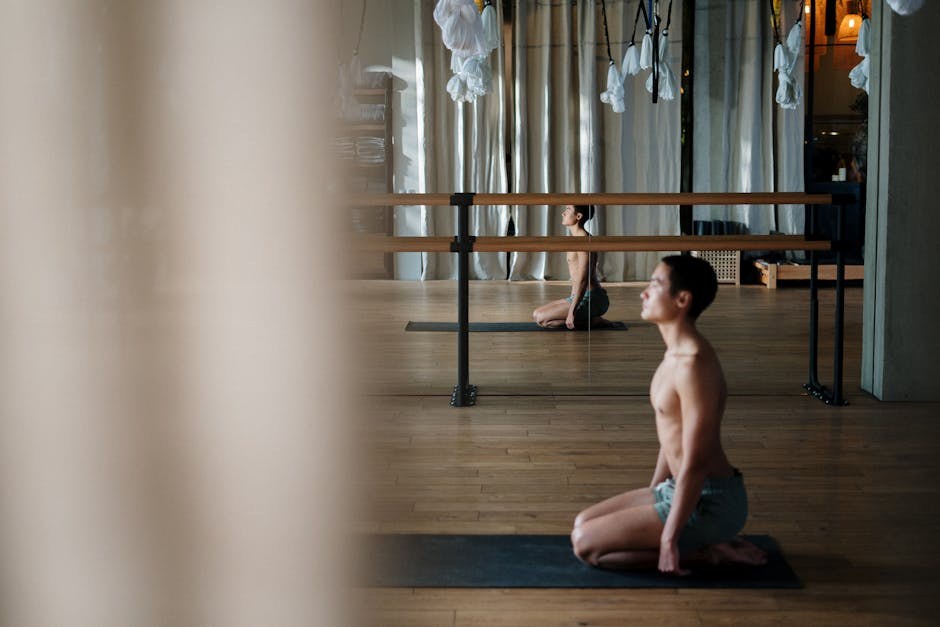Many people find themselves puzzled when trying to differentiate between pansexual and bisexual orientations, and you’re certainly not alone in this. Let’s explore the distinctions to clear up any confusion.
Sexuality is an incredibly diverse and complex aspect of human identity. It’s not limited to just one or two options; in fact, there are a multitude of ways individuals can define their attraction to others. Despite this, the most common debate tends to revolve around two specific orientations: pansexuality and bisexuality. However, it’s often the outside world engaging in this debate, rather than those who identify with either term themselves.
Understanding how these two orientations differ is crucial, but it’s important to acknowledge that sexual identities are deeply personal. So, let’s take a closer look at the difference between pansexual and bisexual orientations, starting with some foundational knowledge.

Pansexual vs. Bisexual: Love Beyond Boundaries
Before we dive into definitions, it’s essential to recognize that sexual identities are not something that should be scrutinized by anyone other than the individual identifying with them. In other words, sexuality is something personal, and how someone feels about others should not be up for judgment. Whether you’re a pansexual or bisexual individual, the core of your attraction is your own experience, and that’s what matters.
As society becomes more open-minded about diverse sexualities, it’s easy for some to misunderstand the intentions behind certain inquiries. Often, people simply want to learn more-there’s no need for concern, as curiosity doesn’t always equate to criticism.
The Historical Context of the Terms
It’s crucial to distinguish between pansexual and bisexual because, while these orientations may appear similar, they actually have significant differences. Understanding these distinctions not only helps prevent mislabeling individuals but also enables us to better appreciate their unique experiences.

In the past, terms like bisexual or pansexual didn’t exist in the way we use them today. Many people simply identified as straight, gay, or lesbian, and some didn’t feel the need to categorize their attractions at all. Sexuality was often viewed as a fluid spectrum, with individuals navigating between different attractions based on various circumstances. It wasn’t until the late 20th century that the terms as we know them came into broader use.
What Is Pansexuality vs. Bisexuality?
While both bisexuality and pansexuality describe forms of sexual attraction to multiple genders, they carry different connotations. Bisexuality traditionally refers to an attraction to two or more genders, while pansexuality extends beyond gender, encompassing an attraction to individuals regardless of their gender identity.
However, it’s important to note that identifying as pansexual doesn’t mean a person is attracted to absolutely everyone-just as a heterosexual person is not attracted to every member of the opposite sex. In fact, many bisexual individuals describe their attraction based on more than just biological sex, and may identify as agender or gender-fluid.

The distinction often drawn between pansexuality and bisexuality is that the former is focused more on the individual’s personality and essence, rather than the physical attributes or gender identity of the person. Still, it’s essential to understand that bisexuals, too, are not solely concerned with someone’s body-they’re simply attracted to multiple genders.
Breaking Down Misconceptions About Pansexuality
Pansexuality is a relatively new term in the context of modern language, and many people may have felt this attraction without knowing how to name it. So, let’s explore some common misconceptions about pansexuality.
1. Pansexuality Means Equal Attraction to All Genders
A common myth is that pansexual individuals are equally attracted to all genders. While pansexuality includes attraction to a broad spectrum of genders, it doesn’t mean pansexuals are attracted to everyone. Similar to how a straight person may only be attracted to the opposite gender, pansexuals have preferences and boundaries, but they are open to a wider range of possibilities.
Not all pansexuals disregard gender entirely; some may recognize a person’s gender but still feel that it doesn’t impact their attraction to them. The key idea is that, for pansexual individuals, gender holds less significance compared to the person’s deeper qualities.
2. Pansexuality Equals Polyamory
Some might believe that pansexuality and polyamory are inherently linked, but they are distinct concepts. While a pansexual person might choose a polyamorous lifestyle, pansexuality itself is not about the number of partners someone has. It’s about being attracted to individuals regardless of gender.
Polyamory, on the other hand, refers to the practice or desire to have multiple romantic or sexual relationships at the same time with the consent of everyone involved. A pansexual person could be monogamous or polyamorous, just as someone of any sexual orientation can be.
3. Pansexuals Are Promiscuous
Another harmful stereotype is that pansexuals are promiscuous or sleep with everyone they encounter. This simply isn’t true. Just because a person has the potential to be attracted to a wider range of individuals doesn’t mean they’re inclined to pursue sexual relationships with all of them.
This myth is comparable to assuming a heterosexual individual will be attracted to every member of the opposite sex. Attraction is a nuanced and personal experience that doesn’t equate to promiscuity.
4. Pansexuals Are Less Likely to Be Monogamous
There is also a misconception that pansexuals are less likely to be monogamous, which is incorrect. Just like any other sexual orientation, pansexual individuals are equally capable of engaging in monogamous relationships. Their orientation doesn’t determine their commitment to one partner-it simply reflects the diversity of people they might feel attracted to.
Understanding Bisexuality: Common Misconceptions
Bisexuality, often considered a more well-known sexual orientation, is the subject of its own set of misunderstandings. Let’s take a look at some frequent myths about bisexuality.
1. Bisexuals Are Only Attracted to Two Genders
Many people believe that being bisexual means being attracted exclusively to men and women. However, bisexuality encompasses an attraction to more than just these two genders. Bisexual individuals may be attracted to any number of genders, but their attraction is not all-encompassing like that of a pansexual person.
Therefore, bisexuality is not limited to binary genders, and some bisexual individuals may be attracted to nonbinary or gender-fluid people as well.
2. Bisexuals Are Always 50% Straight and 50% Gay
It’s a common misconception that bisexual individuals experience an equal attraction to both men and women. In reality, this is not the case. Bisexuality is not about a 50-50 balance-it simply means being attracted to more than one gender. The exact proportions can vary significantly from person to person.
3. Bisexuals Are Unfaithful or Cheaters
Another damaging stereotype is that bisexual people are inherently unfaithful or more likely to cheat. This is a harmful and baseless myth. Being attracted to multiple genders doesn’t equate to being promiscuous or unfaithful in a committed relationship.
Just like any other sexual orientation, bisexuality doesn’t determine whether someone will cheat or remain loyal. Bisexual people are just as capable of maintaining healthy, monogamous relationships as anyone else.
4. Bisexuality Is Just a Phase
Finally, there’s the misconception that bisexuality is just a temporary phase or something people “grow out of.” This stereotype is particularly prevalent when people identify as bisexual and face dismissive comments, such as “You’re just confused” or “You’ll eventually pick a side.”
In reality, bisexuality is a valid and enduring sexual orientation. It’s not a trend or a phase, and the individuals who identify as bisexual are just as certain of their attraction to multiple genders as anyone else is of their own orientation.
Can Sexual Orientation Change Over Time?
Yes, sexual orientation can evolve over the course of a person’s life. People may experience shifts in their sexual identity due to a variety of factors-whether it’s personal growth, changing relationships, or simply a greater understanding of themselves.
This concept of sexual fluidity acknowledges that someone’s sexual preferences may change, but it’s different from gender fluidity. A person may continue to be attracted to the same genders while identifying with a different sexual label over time.
What If None of the Terms Feel Right?
If neither pansexuality nor bisexuality resonates with you, that’s perfectly okay. It’s important to remember that sexuality is unique to each individual. You may identify as queer or be questioning your orientation. “Queer” is an umbrella term used by individuals who don’t fully identify as heterosexual, and “questioning” refers to those still figuring out their sexual identity.
There’s no rush to label yourself, and your journey is entirely your own. Whether you’re exploring or already have a clear sense of your sexual identity, the process of self-discovery is personal, and no timeline is required.
Ultimately, both pansexuality and bisexuality reflect a beautiful diversity of attraction. While they are distinct in some ways, they share a common thread in acknowledging the complexity of human relationships and the capacity to love and be attracted to others without rigid boundaries.